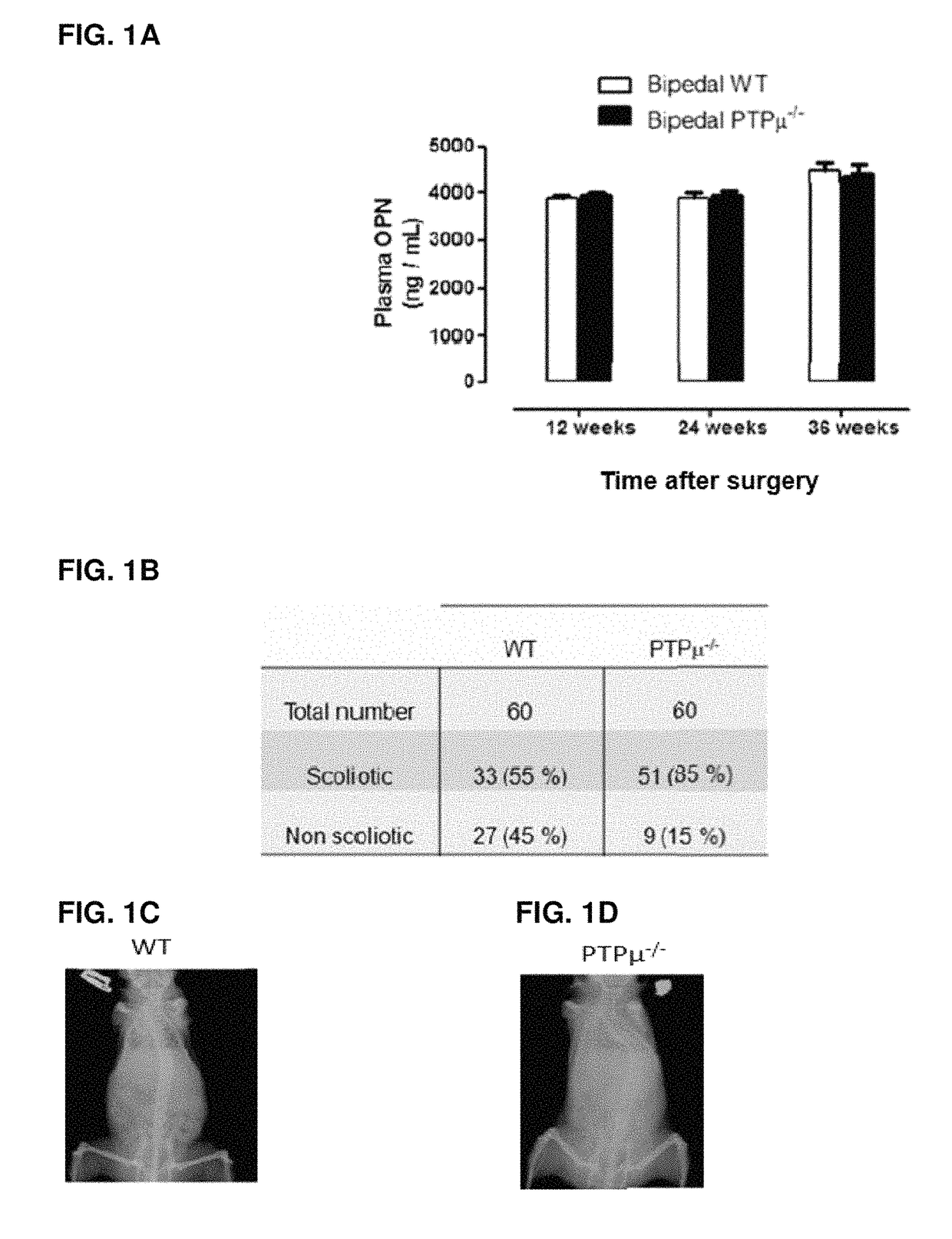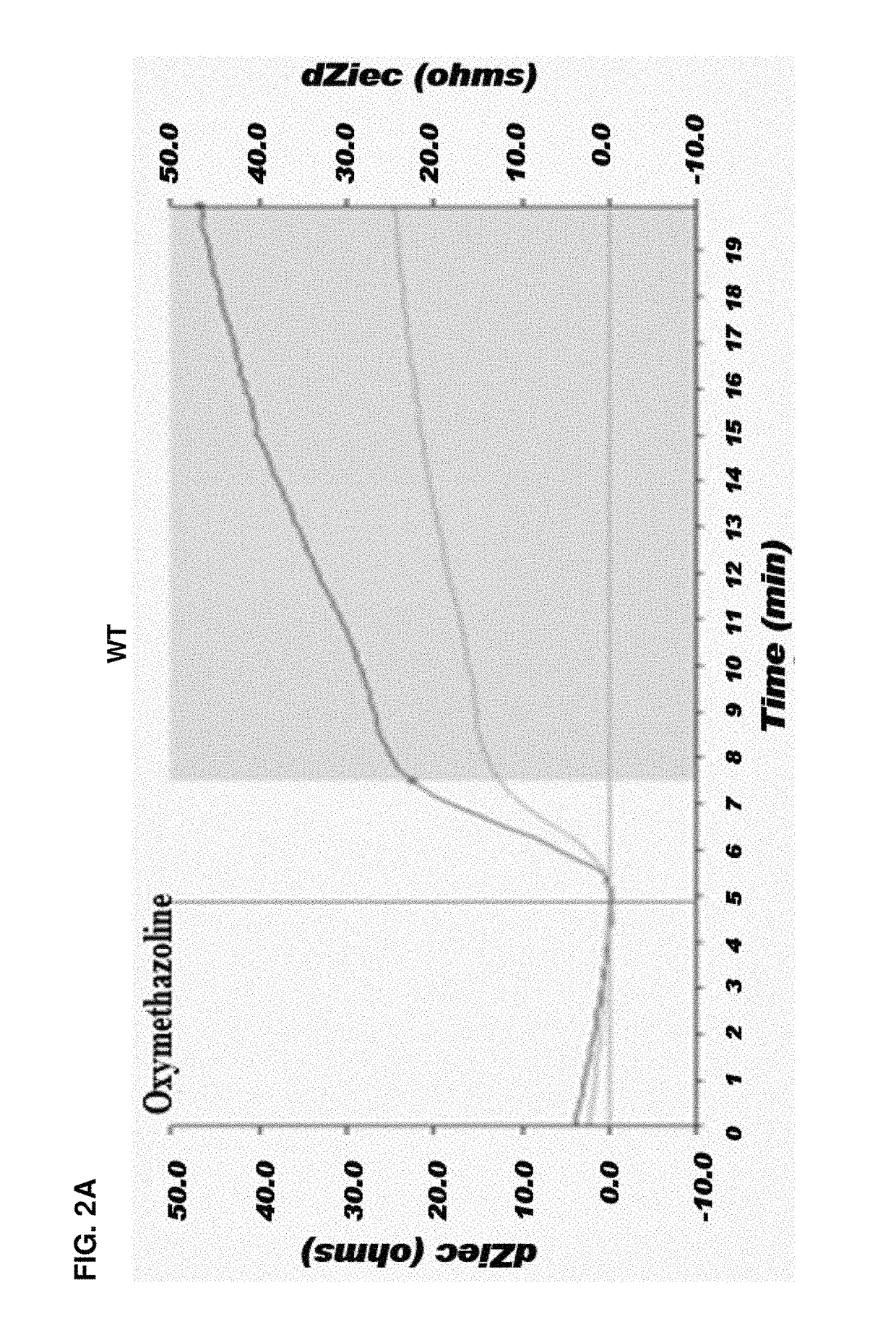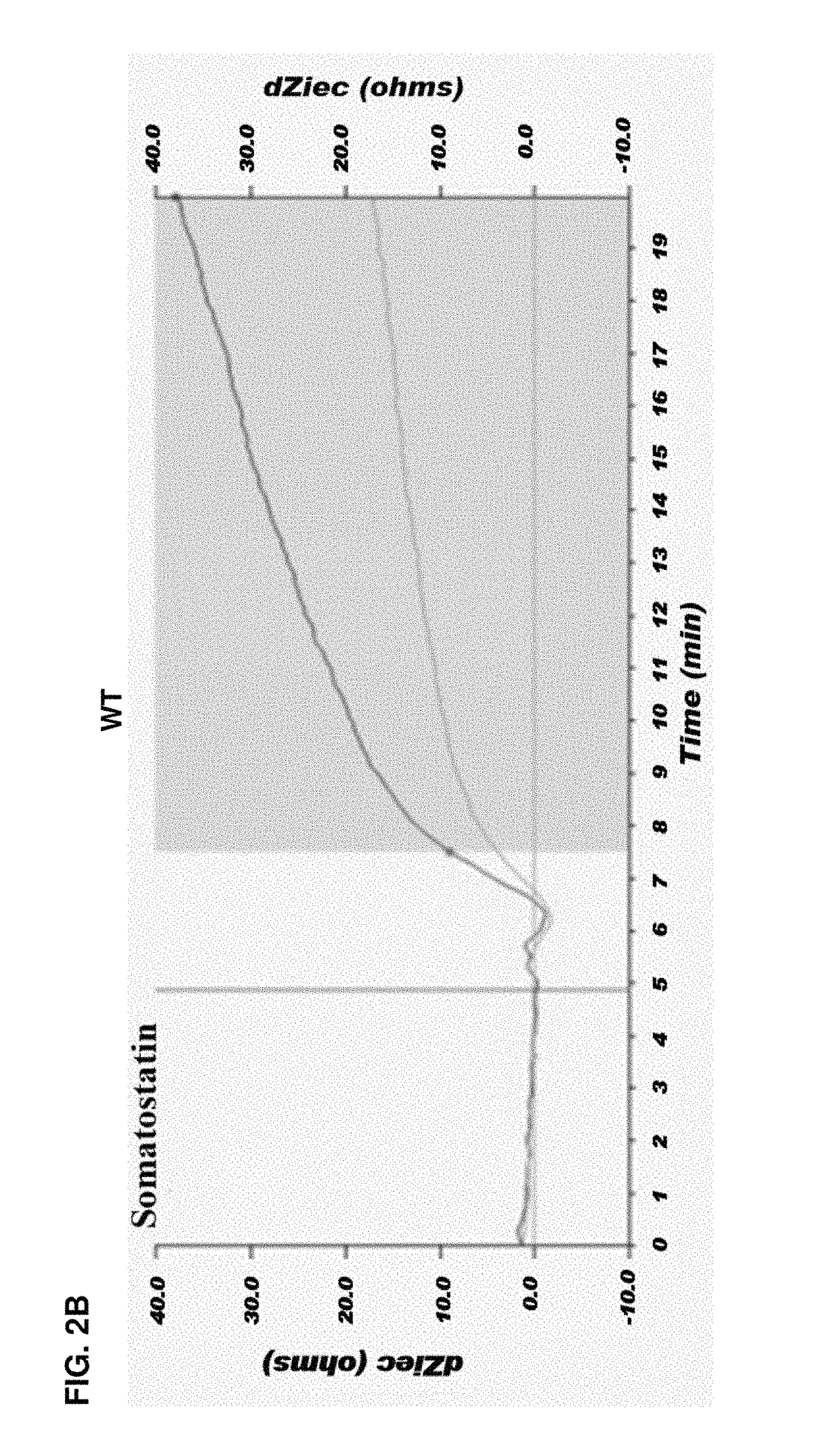Composition comprising a cell sample from a subject with scoliosis and a reagent for detecting PTPμ or PIPK1y
a cell sample and scoliosis technology, applied in the field of new markers for the progression of idiopathic scoliosis, can solve the problems of life-threatening manifestations, unpredictable curvature progression, and significant physical deformity and even cardiopulmonary problems, and achieves a greater incidence of scoliosis, exacerbate spinal deformity, and pronounced lateral curvatur
- Summary
- Abstract
- Description
- Claims
- Application Information
AI Technical Summary
Benefits of technology
Problems solved by technology
Method used
Image
Examples
example 1
Materials and Methods
Patient Recruitment
[0112]The Institutional Review Board of the Sainte-Justine Hospital, Montreal, Quebec approved this study. Parents or legal guardians of all participants gave their written informed consent, and minors gave their assent. An orthopedic surgeon at the Saint-Justine Children's hospital clinically assessed each patient, and all bone biopsies were collected during corrective surgeries.
[0113]
TABLE IIClinical data of patients used to test PTPμ and PIPKγ, by qPCR and Western Blot.FamilyPatientCobbType ofHistory ofNumberGenderAgeDiagnosisAngleCurvaturePainScoliosisMedical HistoryGroupT-26Male14.6TraumaN / AN / ANoN / AN / AControlT-29Male15.8TraumaN / AN / ANoN / AN / AControlT-32Female8.8TraumaN / AN / ANoN / AN / AControlT-22Female14.0TraumaN / AN / ANoN / AN / AControlT-8Female15.1TraumaN / AN / ANoN / AOsteochondrosisControlT-19Female15.5TraumaN / AN / ANoN / AClubfootControlT-34Male14.1TraumaN / AN / ANoN / AN / AControlT-44Male12.6TraumaN / AN / ANoN / AN / AControlT-18Female19.0TraumaN / AN / ANoN / AN / AContro...
example 2
Lack of PTPμ Influences the Nature of Scoliosis Associated with High Plasma OPN in Bipedal Mice
[0129]Amputation of forelimbs and tails induces scoliosis in mice after 40 weeks of bipedal ambulation 16, 15 and increases their plasma OPN levels. Consistent with this approach, scoliosis was induced in female wild type (WT) and PTPμ knockout (PTPμ− / −) mice to examine the impact of PTPμ deficiency on the development of scoliosis under high plasma OPN conditions. Measurements of OPN in plasma from PTPμ− / − mice were performed each 12 weeks during the experimental period. Results presented in FIG. 1-A, have revealed no significant difference in plasma OPN level between normal scoliotic C57Bl / 6 bipedal mice and PTPμ scoliotic ones. At all time points, levels of plasma OPN in WT and PTPμ− / − mice were similar. Of all mice examined by radiography at the final time point 36th postoperative week, lateral curvature was apparent in 55% of WT and 85% of PTPμ− / − mice, indicating a higher incidence of...
example 3
Lack of PTPμ Amplifies the Defective GiPCR Signaling in Bipedal Mice
[0130]Evidences for the occurrence of defective GiPCR signaling in bipedal mice was demonstrated by a reduced ability of various GiPCR selective agonists to promote cell signaling as measured by CDS (WO 2010 / 040234 Moreau et al.). To examine the impact of PTPμ deficiency on this defect, osteoblasts from bipedal WT and PTPμ− / − mice were screened for their response to three GiPCR selective agonists identified in (FIG. 2). In agreement with previous results (Akoume et al Spine 2010), all three compounds evoked typical CDS response profiles of GiPCR in WT osteoblasts. Consistent with Gi coupling for their cognate receptors in these cells, response to each of the three tested compounds was blocked by pre-treatment with PTX (FIGS. 2 A-F). Similar results were obtained with PTPμ− / − osteoblasts (FIGS. 2 G-L). Results illustrated in FIG. 3 show that all three compounds increased response in a concentration-dependent manner i...
PUM
| Property | Measurement | Unit |
|---|---|---|
| Cobb's angle | aaaaa | aaaaa |
| Cobb's angle | aaaaa | aaaaa |
| Cobb's angle | aaaaa | aaaaa |
Abstract
Description
Claims
Application Information
 Login to View More
Login to View More - R&D
- Intellectual Property
- Life Sciences
- Materials
- Tech Scout
- Unparalleled Data Quality
- Higher Quality Content
- 60% Fewer Hallucinations
Browse by: Latest US Patents, China's latest patents, Technical Efficacy Thesaurus, Application Domain, Technology Topic, Popular Technical Reports.
© 2025 PatSnap. All rights reserved.Legal|Privacy policy|Modern Slavery Act Transparency Statement|Sitemap|About US| Contact US: help@patsnap.com



